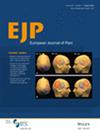What a Sham(e): Sham-Controlled Conditioned Pain Modulation Effects on Pressure but Not Heat Pain Thresholds in Healthy Volunteers
Abstract
Background
Conditioned pain modulation (CPM) is a well-established experimental paradigm to study descending pain modulation in humans, measuring the pain modulatory effect of a painful conditioning stimulus (CS) on a painful test stimulus (TS). Control conditions using a non-painful CS accounting for modulatory effects not attributable to the painfulness of the CS are seldom included. Thus, this study aimed to differentiate CPM effects from perceived changes of the TS unrelated to the painfulness of the CS by comparing effects of a painful and a control CS on four different TS.
Methods
Forty-nine healthy participants underwent a combined parallel and sequential CPM paradigm with a cold water bath (median NRS 8/10) as painful and an ambient-temperature sham water bath (median NRS 0/10) as non-painful control CS. TS were pressure and heat pain thresholds (PPT, HPT) (parallel and sequential) and temporal summation of pain (TSP, sequential) (pressure and heat). Larger TS changes with the painful compared to the control CS were interpreted as sham-controlled CPM effects.
Results
A parallel sham-controlled CPM effect was only detected for PPT (significantly larger PPT increases during the painful compared to the control condition (p = 0.009)). HPT increased for both conditions without a significant difference between conditions (p = 0.152). TSP was successfully induced but not modulated by either CS (p > 0.05).
Conclusion
This study demonstrates sham-controlled CPM effects on PPT, but not on HPT, most likely due to heat adaptation or habituation. This challenges the interpretation of prior studies using CPM paradigms with HPT as TS without a control condition.
Significance
This study highlights the importance of including control conditions in CPM paradigms using HPT as TS. HPT increased similarly during a painful and a control condition, most likely due to adaptation and habituation. Although these are known effects, CPM studies rarely control for them. Pressure pain thresholds increased more during the painful than during the control condition, making it a more suitable TS, especially when a control condition is absent.


 求助内容:
求助内容: 应助结果提醒方式:
应助结果提醒方式:


